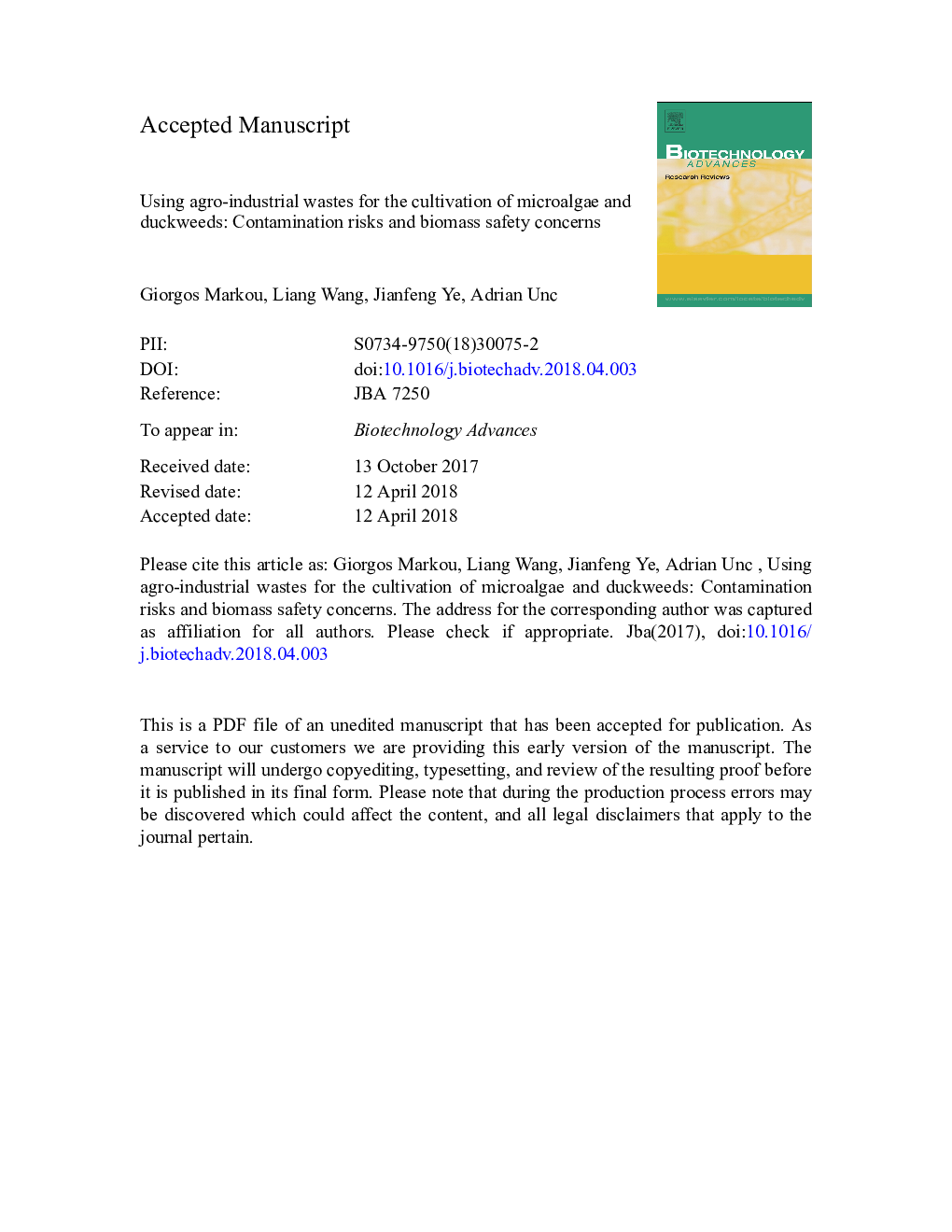| کد مقاله | کد نشریه | سال انتشار | مقاله انگلیسی | نسخه تمام متن |
|---|---|---|---|---|
| 6486606 | 1416256 | 2018 | 37 صفحه PDF | دانلود رایگان |
عنوان انگلیسی مقاله ISI
Using agro-industrial wastes for the cultivation of microalgae and duckweeds: Contamination risks and biomass safety concerns
ترجمه فارسی عنوان
استفاده از زباله های صنعتی کشاورزی برای کشت زراعی و زراعی: خطرات آلایندگی و نگرانی های مربوط به ایمنی زیست توده
دانلود مقاله + سفارش ترجمه
دانلود مقاله ISI انگلیسی
رایگان برای ایرانیان
کلمات کلیدی
موضوعات مرتبط
مهندسی و علوم پایه
مهندسی شیمی
بیو مهندسی (مهندسی زیستی)
چکیده انگلیسی
Aquatic organisms, such as microalgae (Chlorella, Arthrospira (Spirulina), Tetrasselmis, Dunalliela etc.) and duckweed (Lemna spp., Wolffia spp. etc.) are a potential source for the production of protein-rich biomass and for numerous other high-value compounds (fatty acids, pigments, vitamins etc.). Their cultivation using agro-industrial wastes and wastewater (WaW) is of particular interest in the context of a circular economy, not only for recycling valuable nutrients but also for reducing the requirements for fresh water for the production of biomass. Recovery and recycling of nutrients is an unavoidable long-term approach for securing future food and feed production. Agro-industrial WaW are rich in nutrients and have been widely considered as a potential nutrient source for the cultivation of microalgae/duckweed. However, they commonly contain various hazardous contaminants, which could potentially taint the produced biomass, raising various concerns about the safety of their consumption. Herein, an overview of the most important contaminants, including heavy metals and metalloids, pathogens (bacteria, viruses, parasites etc.), and xenobiotics (hormones, antibiotics, parasiticides etc.) is given. It is concluded that pretreatment and processing of WaW is a requisite step for the removal of several contaminants. Among the various technologies, anaerobic digestion (AD) is widely used in practice and offers a technologically mature approach for WaW treatment. During AD, various organic and biological contaminants are significantly removed. Further removal of contaminants could be achieved by post-treatment and processing of digestates (solid/liquid separation, dilution etc.) to further decrease the concentration of contaminants. Moreover, during cultivation an additional removal may occur through various mechanisms, such as precipitation, degradation, and biotransformation. Since many jurisdictions regulate the presence of various contaminants in feed or food setting strict safety monitoring processes, it would be of particular interest to initiate a multi-disciplinary discussion whether agro-industrial WaW ought to be used to cultivate microalgae/duckweed for feed or food production and identify most feasible options for doing this safely. Based on the current body of knowledge it is estimated that AD and post-treatment of WaW can lower significantly the risks associated with heavy metals and pathogens, but it is yet unclear to what extent this is the case for certain persistent xenobiotics.
ناشر
Database: Elsevier - ScienceDirect (ساینس دایرکت)
Journal: Biotechnology Advances - Volume 36, Issue 4, JulyâAugust 2018, Pages 1238-1254
Journal: Biotechnology Advances - Volume 36, Issue 4, JulyâAugust 2018, Pages 1238-1254
نویسندگان
Giorgos Markou, Liang Wang, Jianfeng Ye, Adrian Unc,
